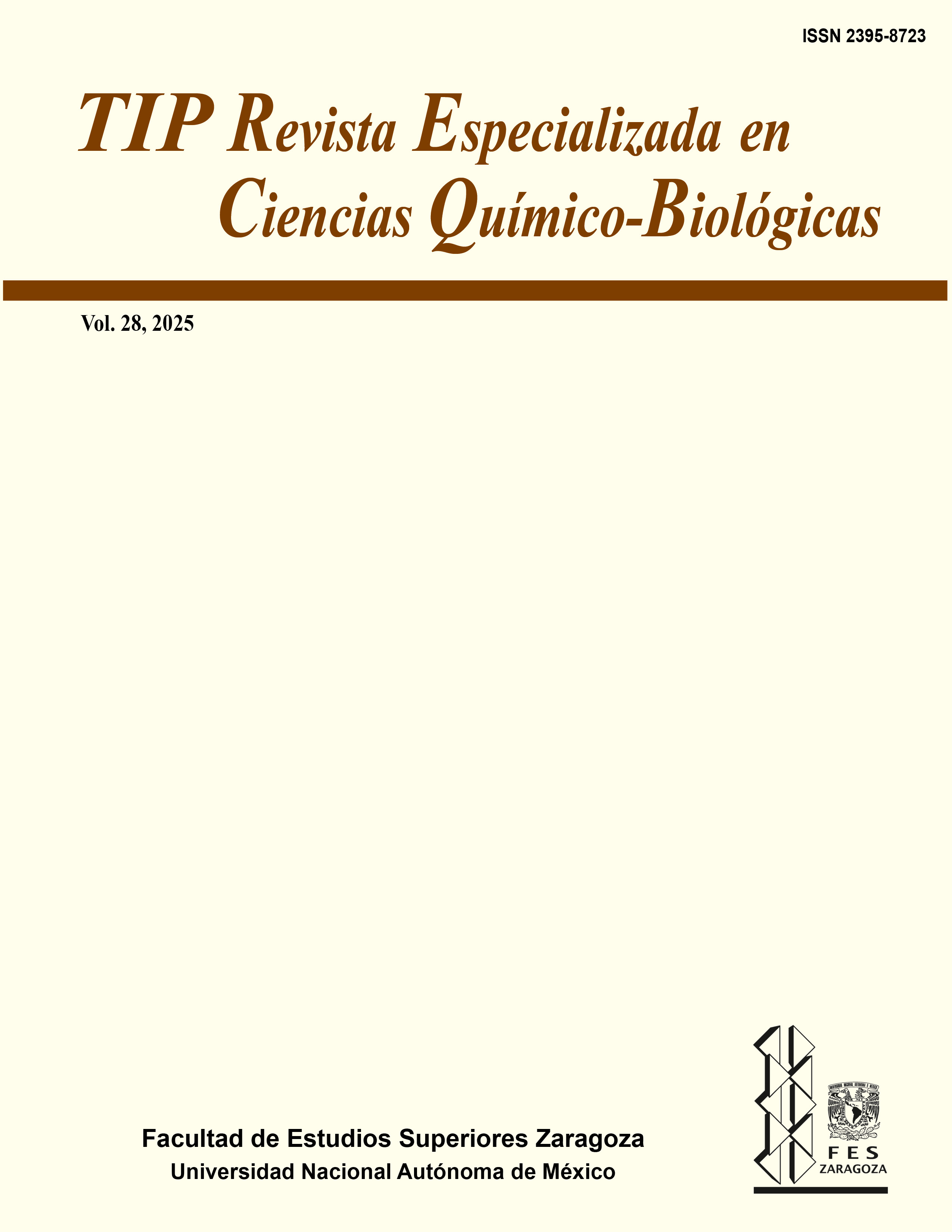Abstract
Insulin is a small globular protein with an alpha-helical structure that regulates glucose homeostasis in the body. When its function fails in diabetic patients, the protein produced through an industrial chemical process is used. This procedure poses significant challenges for pharmaceutical laboratories due to the formation of insulin amyloid aggregates. Phenolic compounds, such as phenol and m-cresol, are commonly used to stabilize the hexameric form of insulin during its commercial preparation. However, their long-term use can be toxic due to the adverse effects caused by phenols. Therefore, in this study, avenanthramide-C, the main polyphenol in oats, was selected to evaluate its antiamyloid capacity due to its structural similarity to the aforementioned phenolic compounds. The results demonstrate that avenanthramide-C decreases the formation of insulin amyloids in a dose-dependent manner. Spectrophotometric analysis using the ANS probe shows that avenantramide-C binds to hydrophobic regions of partially unfolded insulin intermediates and can therefore be considered as a novel agent to inhibit amyloid formation during biopharmaceutical manufacturing.
References
Alam, P., Beb, A.Z., Siddiqi, M.K., Chaturvedi, S.K., Rajpoot, R.K., Ajmal, M.R., Zaman, M., Abdelhameed, A.S. & Khan, R.H. (2017). Ascorbic acid inhibits human insulin aggregation and protects against amyloid induced cytotoxicity. Archives of Biochemistry and Biophysics, 621, 54-62. DOI: 10.1016/j.abb.2017.04.005
Das, A., Gangarde, Y.M., Tomar, V., Shinde, O., Upadhyay, T., Alam, S., Ghosh, S., Chaudhary, V. & Saraogi, I. (2020). Small-molecule inhibitor prevents insulin fibrillogenesis and preserves activity. Molecular pharmaceutics, 17, 1827-1834. DOI: 10.1021/acs.molpharmaceut.9b01080
Dubey, K., Anand, B.G., Shekhawat, D.S. & Kar, K. (2017). Eugenol prevents amyloid formation of proteins and inhibits amyloid-induced hemolysis. Scientific Reports, 7, 40744- 40754. DOI: 10.1038/srep40744
Gancar, M., Kurin, E., Bednarikova, Z., Marek, J., Mucaji, P., Nagy, M. & Gazova, Z. (2020). Amyloid aggregation of insulin: An interaction study of green tea constituents. Scientific Reports, 10, 9115-9126. DOI: 10.1038/s41598-020-66033-6
Gong H., He, Z., Peng, A., Zhang, X., Cheng, B., Sun, Y., Zheng, L. & Huang, K. (2014). Effect of several quinones on insulin aggregation. Scientific Reports, 4, 5648-5655. DOI: 10.1038/srep05648
Hudson, S.A., Ecroyd, H., Kee, T.W. & Carver, J.A. (2009). The thioflavin T fluorescence assay for amyloid fibril detection can be biased by the presence of exogenous compounds. The FEBS Journal, 276, 5960-5972. DOI: 10.1111/j.1742-4658.2009.07307.x
Iannuzzi, C., Borriello, M., Portaccio, M., Irace, G. & Sirangelo, I. (2017). Insights into insulin fibril assembly at physiological and acidic pH and related amyloid intrinsic fluorescence. International Journal of Molecular Sciences, 18, 2551-2564. DOI: 10.3390/ijms18122551
Jarosinski, M.A., Dhayalan, B., Chen, Y., Chatterjee, D., Varas, N. & Weiss, M.A. (2021). Structural principles of insulin formulation and analog design: A century of innovation. Molecular Metabolism, 52,101325-101343. DOI: 10.1016/j.molmet.2021.101325
Jayamani, J., Shanmugam, G., Ramaprasad, E. & Singam, A. (2014). Inhibition of insulin amyloid fibril formation by ferulic acid, a natural compound found in many vegetables and fruits. Royal Society of Chemistry Advances, 4, 62326-62336. DOI: 10.1039/c4ra11291a
Lakowicz, J.R. (2006). Principles of Fluorescence Spectroscopy. 3rd edition. Baltimore, MD. Springer pp 277-282.
Nie, R., Zhu, W., Peng, J. Ge, Z. & Li, C. (2016). A-type dimeric epigallocatechin-3-gallate (EGCG) is a more potent inhibitor against the formation of insulin amyloid fibril than EGCG monomer. Bichimie, 125, 204-212. DOI: 10.1016/j.biochi.2016.03.011
Okamura, S., Hayashino, Y., Kore-Eda, S. & Tsujii, S. (2013). Localized amyloidosis at the site of repeated insulin injection in a patient with type 2 diabetes. Diabetes Care, 36, e200. DOI: 10.2337/dc13-1651
Qafary, M., Rashno, F., Khajen, K., Khaledi, M. & Moosavi-Movahedi, A. (2022). Insulin fibrillation: Strategies for inhibition. Progress in Biophysics and Molecular Biology, 175, 49-62. DOI: 10.1016/j.pbiomolbio.2022.09.001
Quiroz Vázquez, M.G., Montiel Condado, D., Gonzalez Hernandez, B. & Gonzalez-Horta, A. (2020). Avenathramide-C prevents amyloid formation of bovine serum albumin. Biophysical Chemistry, 263, 106391-106399. DOI: 10.1016/j.bpc.2020.106391
Rabiee, A., Ebrahim-Habibi, A., Ghasemi, A. & Nemat-Gorgani, M. (2013). How curcumin affords effective protein against amyloid fibrillation in insulin. Food and Functio, 4, 1474-1480. DOI: 10.1039/c3fo00019b
Reinke, A.A. & Gestwicki, J.E. (2007). Structure-activity relationships of amyloid beta-aggregation inhibitors based on curcumin: influence of linker length and flexibility. Chemical Biology & Drug Design, 70, 206-215. DOI: 10.111/j.1747-0285.2007.00557.x.
Weber, C., Kammerer, D., Streit, B. & Licht, A. (2015). Phenolic excipients of insulin formulations induce cell death, pro-inflammatory signaling and MCP-1 release. Toxicology Reports, 2, 194-2020. DOI: 10.1016/j.toxrep.2014.11.019
Younan, N.D. & Viles, J.H. (2015). A comparison of three fluorophores for the detection of amyloid fibers and prefibrillar oligomeric assemblies. Tht (Thioflavin T) ANS (1-anilinonaphthalene-8-sulfonic acid) and bisANS (4,4-Dianilino-1,1-binaphthyl-5,5-disulfonic acid). Biochemistry, 54, 4297-4306. DOI: 10.1021/acs.biochem.5b00309
Ziaunys, M., Mikalauskaite, K., Sakalauskas, A. & Smirnovas, V. (2024). Study of insulin aggregation and fibril structure under different environmental conditions. International Journal of Molecular Science, 25, 9406-9422. DOI: 10.3390/ijms25179406
TIP Magazine Specialized in Chemical-Biological Sciences, distributed under Creative Commons License: Attribution + Noncommercial + NoDerivatives 4.0 International.








